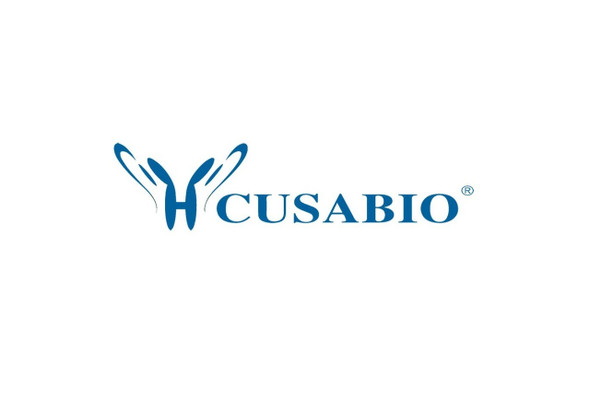Cusabio Human Recombinants
Recombinant Human Dentin matrix acidic phosphoprotein 1 (DMP1) | CSB-YP006967HU
- SKU:
- CSB-YP006967HU
- Availability:
- 25 - 35 Working Days
Description
Recombinant Human Dentin matrix acidic phosphoprotein 1 (DMP1) | CSB-YP006967HU | Cusabio
Alternative Name(s): DMP1; Dentin matrix acidic phosphoprotein 1; DMP-1; Dentin matrix protein 1
Gene Names: DMP1
Research Areas: Signal Transduction
Organism: Homo sapiens (Human)
AA Sequence: LPVTRYQNNESEDSEEWKGHLAQAPTPPLESSESSEGSKVSSEEQANEDPSDSTQSEEGLGSDDHQYIYRLAGGFSRSTGKGGDDKDDDEDDSGDDTFGDDDSGPGPKDRQEGGNSRLGSDEDSDDTIQASEESAPQGQDSAQDTTSESRELDNEDRVDSKPEGGDSTQESESEEHWVGGGSDGESSHGDGSELDDEGMQSDDPESIRSERGNSRMNSAGMKSKESGENSEQANTQDSGGSQLLEHPSRKIFRKSRISEEDDRSELDDNNTMEEVKSDSTENSNSRDTGLSQPRRDSKGDSQEDSKENLSQEESQNVDGPSSESSQEANLSSQENSSESQEEVVSESRGDNPDPTTSYVEDQEDSDSSEEDSSHTLSHSKSESREEQADSESSESLNFSEESPESPEDENSSSQEGLQSHSSSAESQSEESHSEEDDSDSQDSSRSKEDSNSTESKSSSEEDGQLKNIEIESRKLTVDAYHNKPIGDQDDNDCQDGY
Source: Yeast
Tag Info: N-terminal 6xHis-tagged
Expression Region: 17-513aa
Sequence Info: Full Length of Mature Protein
MW: 56 kDa
Purity: Greater than 85% as determined by SDS-PAGE.
Relevance: May have a dual function during osteoblast differentiation. In the nucleus of undifferentiated osteoblasts, unphosphorylated form acts as a transcriptional component for activation of osteoblast-specific genes like osteocalcin. During the osteoblast to osteocyte transition phase it is phosphorylated and exported into the extracellular matrix, where it regulates nucleation of hydroxyapatite.
Reference: "Elucidation of the sequence and the genomic organization of the human dentin matrix acidic phosphoprotein 1 (DMP1) gene: exclusion of the locus from a causative role in the pathogenesis of dentinogenesis imperfecta type II." Hirst K.L., Simmons D., Feng J., Aplin H., Dixon M.J., McDougall M. Genomics 42:38-45(1997)
Storage: The shelf life is related to many factors, storage state, buffer ingredients, storage temperature and the stability of the protein itself. Generally, the shelf life of liquid form is 6 months at -20?/-80?. The shelf life of lyophilized form is 12 months at -20?/-80?.
Notes: Repeated freezing and thawing is not recommended. Store working aliquots at 4? for up to one week.
Function: May have a dual function during osteoblast differentiation. In the nucleus of undifferentiated osteoblasts, unphosphorylated form acts as a transcriptional component for activation of osteoblast-specific genes like osteocalcin. During the osteoblast to osteocyte transition phase it is phosphorylated and exported into the extracellular matrix, where it regulates nucleation of hydroxyapatite.
Involvement in disease: Hypophosphatemic rickets, autosomal recessive, 1 (ARHR1)
Subcellular Location: Nucleus, Cytoplasm, Secreted, extracellular space, extracellular matrix
Protein Families:
Tissue Specificity: Expressed in tooth particularly in odontoblast, ameloblast and cementoblast.
Paythway:
Form: Liquid or Lyophilized powder
Buffer: If the delivery form is liquid, the default storage buffer is Tris/PBS-based buffer, 5%-50% glycerol. If the delivery form is lyophilized powder, the buffer before lyophilization is Tris/PBS-based buffer, 6% Trehalose, pH 8.0.
Reconstitution: We recommend that this vial be briefly centrifuged prior to opening to bring the contents to the bottom. Please reconstitute protein in deionized sterile water to a concentration of 0.1-1.0 mg/mL.We recommend to add 5-50% of glycerol (final concentration) and aliquot for long-term storage at -20?/-80?. Our default final concentration of glycerol is 50%. Customers could use it as reference.
Uniprot ID: Q13316
HGNC Database Link: HGNC
UniGene Database Link: UniGene
KEGG Database Link: KEGG
STRING Database Link: STRING
OMIM Database Link: OMIM









